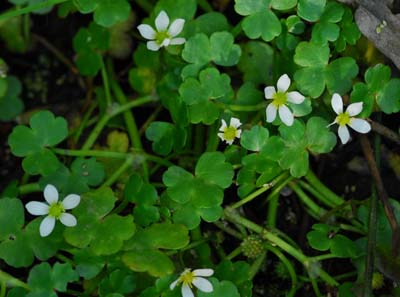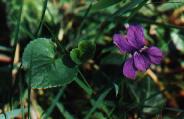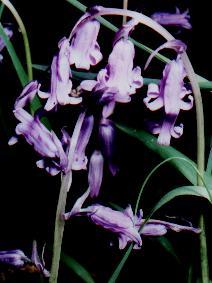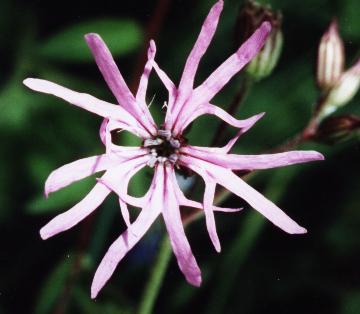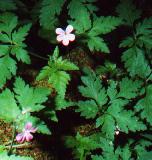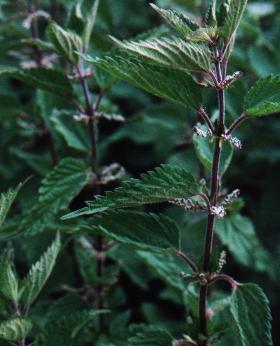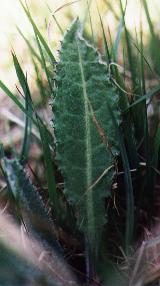|
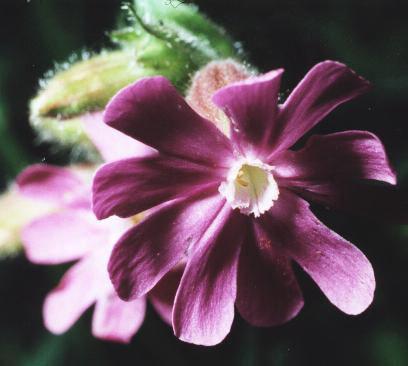
|
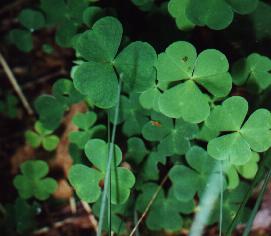
|
|
Red Campion
|
Yellow Sorrel
|
|
Silene dioica (Caryophyllaceae)
|
Oxalis Coniculata (Oxalidaceae)
|
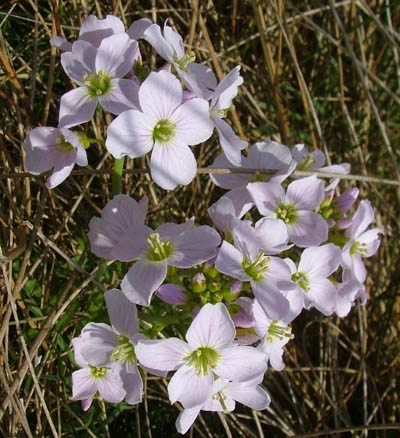 |
This is Lady's Smock
or Cuckoo Flower
(Cardamine Pratensis)and its is now in full
flower amongst the Purple Moor Grass (Molinia
Caerulia). This plant is important for the
Orange Tip butterflies that are around at this time of the year. They
lay their eggs one on each plant. The larvae then use it for food. |
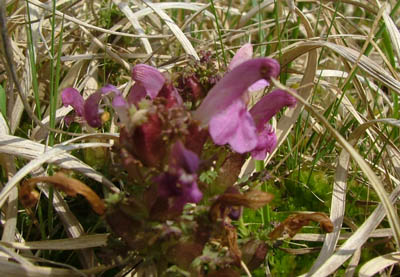 |
If you look carefully in the grass ,
particularly in field two,you can see the Lousewort
( Pedicularis Sylvatica) coming through. It got its name because
it was believed that it harboured lice and gave them to cattle |
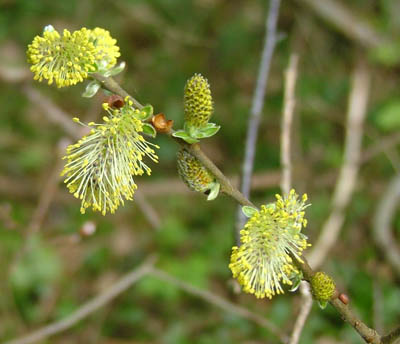 |
The willow
shows its flowers as well. |
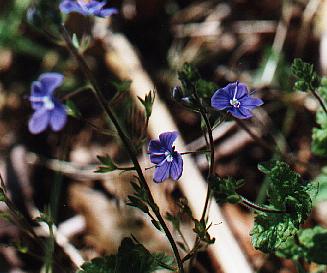 |
This is Speedwell
(Veronica Sp) |
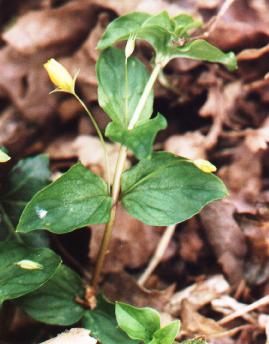 |
We also have some Yellow
Pimpernel (Lysimachia
Nemorum). This is similar to the better-known "Creeping Jenny" (Lysimachia
Nummularia), which is often planted in gardens. The Yellow Pimpernel,
however, can be distinguished by its pointed leaves. |
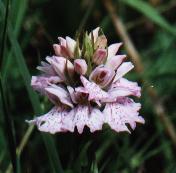 |
In both fields two and three the first of the Orchids are beginning to appear.
This is a Heath Spotted-Orchid (Dactylorhiza maculata) |
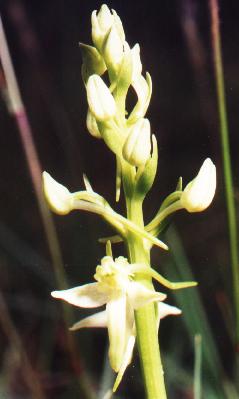 |
By the end of the month the Lesser
Butterfly Orchids (Platanthera
Bifolia) have started to open out. They are so delicate that it is easy
to overlook them. In fact, so far we have only seen four. |
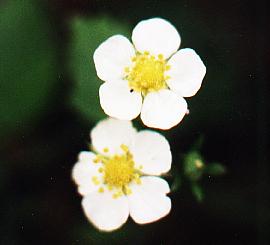 |
The Wild Strawberries
(Fragaria Vesga) have
now appeared. |
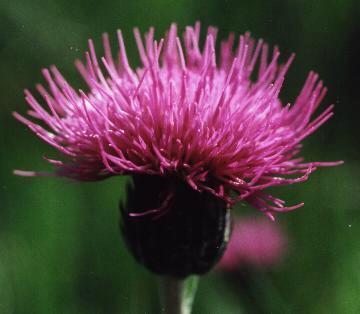 |
By the middle of the month the
Marsh Plume Thistles (Circium Dissectum) are
out in flower. They're now generally called Meadow Thistles. |
|
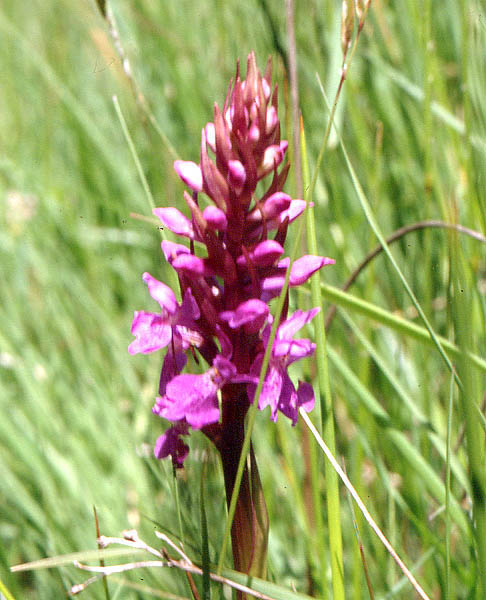
|
By the end of the month
the Southern Marsh Orchids are beginning
to appear in profusion in
Field three
|
|
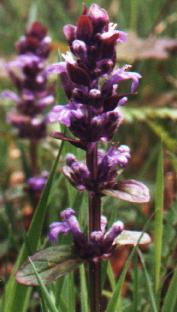
|
The Bugle (Ajuga Reptans) is now showing its flowers. It's a member of the Labiatae
family, which includes all the mints.
|
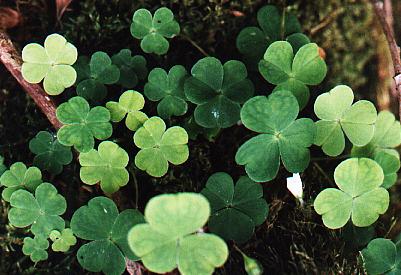 |
The wild flowers are beginning to appear
near the stream. This is Wood Sorrel (Oxalis
acetosella) |
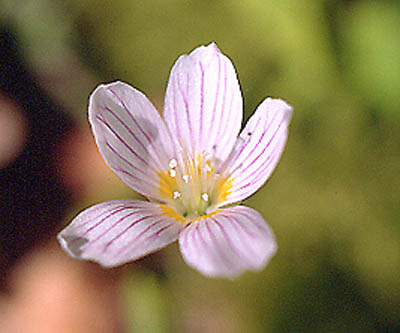 |
The flowers appear at the end of the month. |
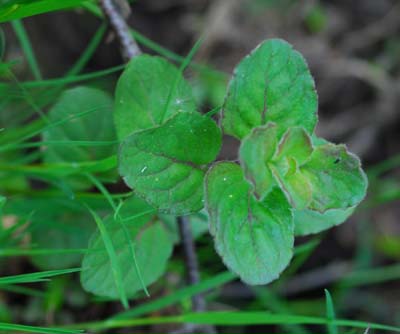 |
The Water Mint (Mentha Aquatica) is beginning to appear.It has the most beautiful sweet mint smell, which you can detect as you walk through the clumps.
When crossed with Spearmint it produces Peppermint.
Like the Peppermint Watermint can be used to counteract stomach pains. |
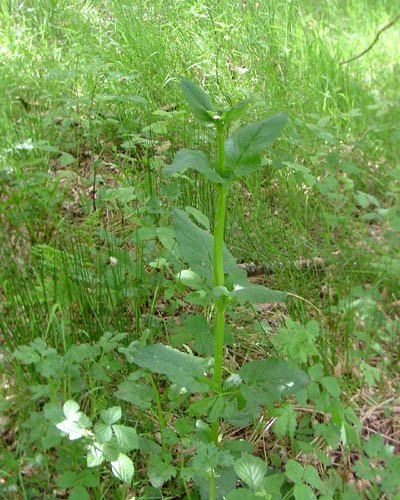 |
This is Figwort. There is quite a large patvch of it near the gate between fields two and three.
|
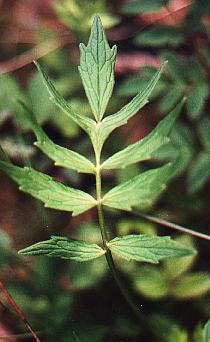 |
This is Common Valerian (Valeriana Officinalis). This appears all over our land |
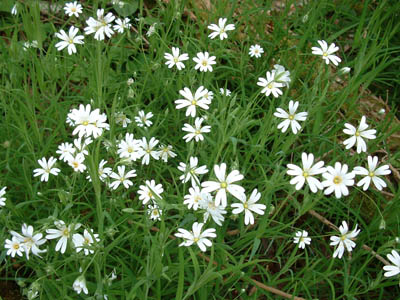 |
This is Greater Stitchwort, (Stellaria holostea) (Caryophyllaceae) |
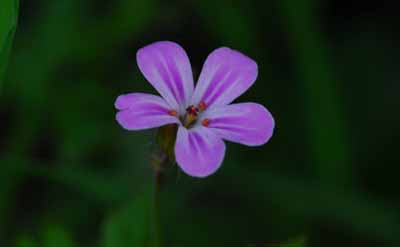 |
This beautiful plant is Herb Robert ( Geranium Robertianum) a form of Cranesbill. As its latin name suggests it is a member of the Geranium Family. In parts of America it is known as "Stinky Bob" |
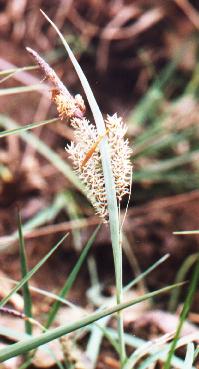 |
The Carnation Sedge (Carex Panicea) is now in flower. |
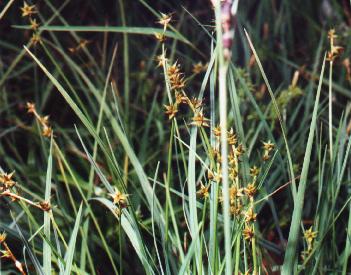 |
One of the common plants on culm is Star Sedge (Carex echinata), so called because of the shape of its flowers. It flowers in May and June and then produces fruits between June and August.
Although common on culm it is not one of the major components of the land and is found only in the marshier parts. |



